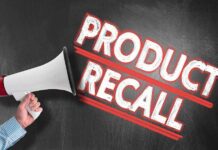The rising tide of food fraud and recalls poses a serious threat to global food safety, particularly affecting some of the world’s most vulnerable regions. How are nations addressing these dangers?
Quick Takes
- Food fraud endangers public health and safety globally.
- Countries with weak regulations, such as Yemen and Chad, are most at risk.
- Technological advancements are key in combating food fraud.
- Government efforts are essential in mitigating these food safety risks.
Growing Food Fraud Concerns
Food fraud is escalating worldwide, presenting a clear threat to food safety and public health. This fraudulent activity includes practices like the adulteration or substitution of food products, undermining trust in the food supply chain. Economically motivated adulteration (EMA) is particularly concerning, involving the intentional alteration of food for financial gain. The FDA cites serious health implications from food fraud, such as lead poisoning and allergic reactions. Such practices jeopardize consumer confidence and safety.
Reports indicate that countries with insecure food supplies and weak regulatory frameworks are prime targets for food fraud. The Food Fraud Vulnerability Index identifies high-risk regions, including Yemen, the Ivory Coast, and Syria. In contrast, nations with robust regulatory systems, like Finland, face minimal threat. Wealthy countries are not immune either; Europe annually suffers significant economic damage from food fraud, further emphasizing the global nature of this issue.
Product Vulnerabilities and Technological Solutions
High-risk products span a variety of categories, from olive oil and honey to seafood and spices. Fraudsters in these sectors employ advanced technologies to make detection challenging. Dr. Patrick Sears highlights the necessity of modern testing methods: “As food supply chains grow more complex and global, ensuring authenticity and safety is critical. Technologies like NMR and mass spectrometry allow us to detect fraud and trace product origins, crucial in protecting consumers.”
According to Dr. Patrick Sears, “As our food supply chains grow more complex and global, ensuring the authenticity and safety of what we eat becomes more critical,” explains Dr. Patrick Sears, a senior lecturer of chemistry and forensic analysis at the University of Surrey. “Rapid, reliable testing methods that can detect contaminants and verify authenticity are no longer just a luxury—they’re essential for protecting consumers across borders.”
Advanced analytical techniques like GC-MS, LC-MS, and NMR spectroscopy have become more user-friendly, empowering broader adoption in detecting food authenticity. Non-scientists can now employ these tools, highlighting their importance in maintaining food safety. However, regulatory frameworks must keep pace with fraudster innovations to safeguard consumers effectively.
Global Efforts and Challenges
Governments and industry stakeholders are stepping up efforts to mitigate food fraud threats. Operations like ‘Operation Sativus’ and ‘Operation OPSON XIII’ have successfully seized counterfeit products and dismantled networks behind fraudulent activities. The European Union is actively enhancing cooperation and legal frameworks, although penalties vary by country. The complexity of global supply chains and climate change exacerbates food fraud risks, necessitating continuous vigilance and cooperation.
“The problem of food fraud continues to grow as the European food supply chain becomes increasingly complex and globalized,” said Lauryna Nelkine, head of research at Wellness Pulse.
Consumer education remains vital in combating food fraud. Transparency from brands and clear labeling empower consumers to make informed choices, reducing the impact of fraudulent activities. Coordinated actions involving technology, regulation, and consumer awareness are crucial to ensuring a safe and trustworthy global food supply chain.
Sources:
- https://www.foodnavigator.com/Article/2025/04/15/food-fraud-threatening-food-safety-what-is-being-done-to-stop-it/
- https://www.fda.gov/food/compliance-enforcement-food/economically-motivated-adulteration-food-fraud
- https://www.technologynetworks.com/applied-sciences/articles/authentic-foods-and-where-to-find-them-challenges-and-solutions-in-food-fraud-testing-394030
- https://www.foodnavigator.com/Article/2025/04/17/why-are-food-and-drink-recalls-on-the-rise/











